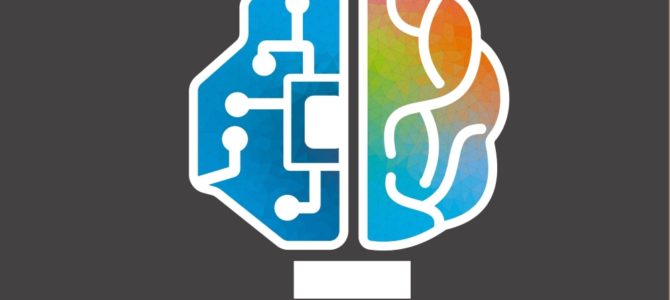
If you ask any administrator about the future of education, he’ll likely mention the blending of science, technology, engineering, and mathematics: STEM. Indeed, it’s so attractive to schools, billions of dollars are spent every year by corporations, startups, and the U.S. federal government in an 1850s-style “gold rush” of gadgetry and glittering lights.
To stand out from the competition and get into classrooms, curriculum developers, policymakers, and advocacy groups have begun to scam the education market by forsaking common-sense STEM principles in pursuit of colorful toys and Critical Race Theory dogma.
STEM education is in danger of no longer preparing the students of the United States for its future economy. Instead, it’s wasting their time by dangling the car keys of entertainment and social justice in front of young eyes.
State standards suggest STEM skills are built from scientifically understanding the world, competent use of technology, and the combination of engineering and mathematical fundamentals to assess problems and implement solutions. These are the honest goals of STEM, preparing students for the modern economy.
Unfortunately, that doesn’t sell. So major STEM curriculum companies like KinderLAB, 1st Maker Space, and Codelicious instead develop courses to teach kids only how to code and develop robots.
It sounds amazing, at first. “My child will be able to code a robot? Wow! That will prepare him for an amazing career.” What no one is telling that parent or student is that less than 2 percent of all jobs in STEM involve coding or robotics. What good is knowing how to code if 98 percent of STEM jobs don’t use it? If you only speak Icelandic, it’s unlikely there is going to be a massive market for your skillset in Cambodia.
Policymakers and advocacy groups are also attempting to bend STEM education into a different scam, the shimmering mirage of social justice. Major groups like the National Science Teaching Association assert women and minority groups are underrepresented in STEM fields in the United States and other Western nations, so someone must be discouraging these demographics from entering STEM while in school. The data shows that access and encouragement in STEM isn’t the problem, however. Many people simply aren’t interested in pursuing it as a career.
Former champions of science education have begun to demand that precious time be eaten up discussing the importance of gender and racial diversity in STEM, suggesting that what drives the technological advances of tomorrow, the economic powerhouse of the United States, and the developments in every field that change the lives for billions rests not in hard work, determination, skills, and tools, but one’s skin color and genitals.
The Racial Equity Institute and The Smithsonian are among many attributing the bedrock of quality STEM learning — perfectionism, a sense of urgency, the written word, and “only one right way — as white supremacy. In fact, if you aren’t teaching your students these social sermons constantly in STEM classrooms, you’re perpetuating “implicit bias.”
Unfortunately, such messaging has consequences. A surgeon who has been trained against perfectionists is a danger to her patients. A virologist who ignores the notes of his colleagues risks certain disaster. An air traffic controller without a sense of urgency risks lives. An engineer who ignores the “only one right way” of mathematical and structural principles might create a structure that wouldn’t be safe from a slight breeze.
What should STEM education look like? In short, we should require a series of skills that every student will use in the modern workforce. An electrician, programmer, radiologist, actuary, and civil engineer should be able to type, parse, and navigate any user interface, identify, and notate issues and probable solutions, calculate and manipulate variables, and communicate findings while working with others.
There are a wealth of examples of schools and programs accomplishing this daily. Vocational and trade schools give young minds hands-on experience in their field, while workshop and science courses give students opportunities to integrate mathematical and notation principles into operative tasks.
Why are so many public and private schools led down the paths of cheap entertainment and virtue signaling? It’s easy to create robotics and coding materials that sell. They captivate the imagination and eat up hours of instruction time, freeing teachers to let students sit at their devices and complete tasks governed by outside providers.
On the contrary, it’s a touch more difficult to convince schools that classical STEM skills and vocational training are worth their time. It demands an active educator to coach, create, critique, and troubleshoot. In reality, however, creating a genuine education experience that produces beneficial, long-lasting results for both students and society at large necessitates hard work, not flashy toys or catchy slogans.
The ultimate effects are obvious. How can we compete in the global economy if our STEM classrooms aren’t preparing our students to achieve new heights while we are wasting valuable class time with toys, barely-applicable coding games, and victim-mentality nonsense? The future of the American industrial, economic, and societal landscape rests on the training of bright minds, not their entertainment and moral preening.
Coding and robotics have their place in STEM curriculum. Robotics clubs and a chapter on coding provide valuable insights into possible careers, and a fun educational experience isn’t something to shun. Similarly, encouraging students regardless of heritage or sex to try STEM is a wonderful thing.
The current model has taken advantage of these two alluring facets to swindle parents and students into believing they are receiving real STEM education. All that glitters isn’t gold, and all that codes isn’t STEM.









